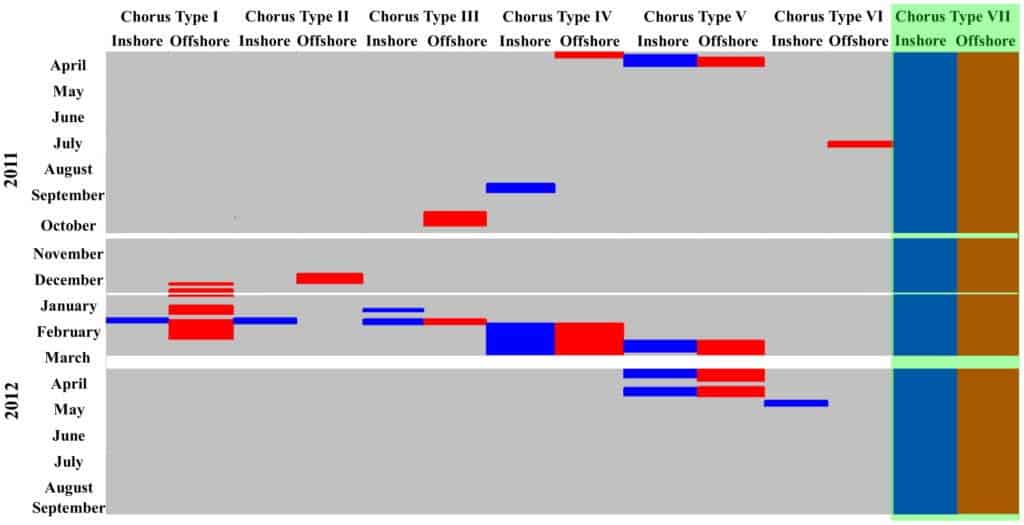The oceans might be a much livelier place than we’d think, new research has found. Just like birds sing on three branches on land, the waters are filled with the song of fish. Most of the sounds come from soloist fish, which repeat the same calls over and over again. But when calls from different species overlap, they form a beautiful chorus.

Image credits David Iliff.
While it may seem pretty silent to us underwater, fish actually rely on sound heavily for reproduction, feeding, or settling territorial disputes. Nocturnal predatory fish use calls to help them stay together in the dark waters and diurnal fish employ several calls to warn trespassers they’re in occupied territory.
Robert McCauley and his colleagues from the Curing University in Perth, Australia, went to the coastal waters off Port Headland in Western Australia for an 18-month long performance. During this time they recorded and identified seven distinct fish choruses, some singing at dawn and others at dusk.
The low, bass-like “foghorn” call is made by the Black Jewfish (Protonibea diacanthus), while the grunting one which resembles “the buzzer in Operation board game,” as researcher Miles Parsons puts, it belongs to a species of Terapontid. The quieter ba-ba-ba sound is made by batfish.
The sounds were recorded with two sea-noise loggers. One of these was placed near the shore of Port Headland and the second one was placed 21.5 km (13.36 miles) away, in offshore waters. This method allowed the team listen in on the area’s fish over a large area and a long period of time, so they could monitor the state of local ecosystems .
“This is a method that allows us to understand what’s happening at Port Headland 24/7 for a year and a half,” says Simpson.
“I don’t know any scuba diver that can stay down there that long!”
The researchers mapped which chorus was seen at which points in time throughout the year, and it’s way more lively there than I would have imagined.

Image credits Miles J. G, Parsons et al., Bioacustics, 2016.
“We are only just beginning to appreciate the complexity involved and still have only a crude idea of what is going on in the undersea acoustic environment,” says lead researcher McCauley.
“I’ve been listening to fish squawks, burble and pops for nearly 30 years now, and they still amaze me with their variety,” he concludes.
The full paper “Fish choruses off Port Hedland, Western Australia” has been published in the journal Bioacoustics.


